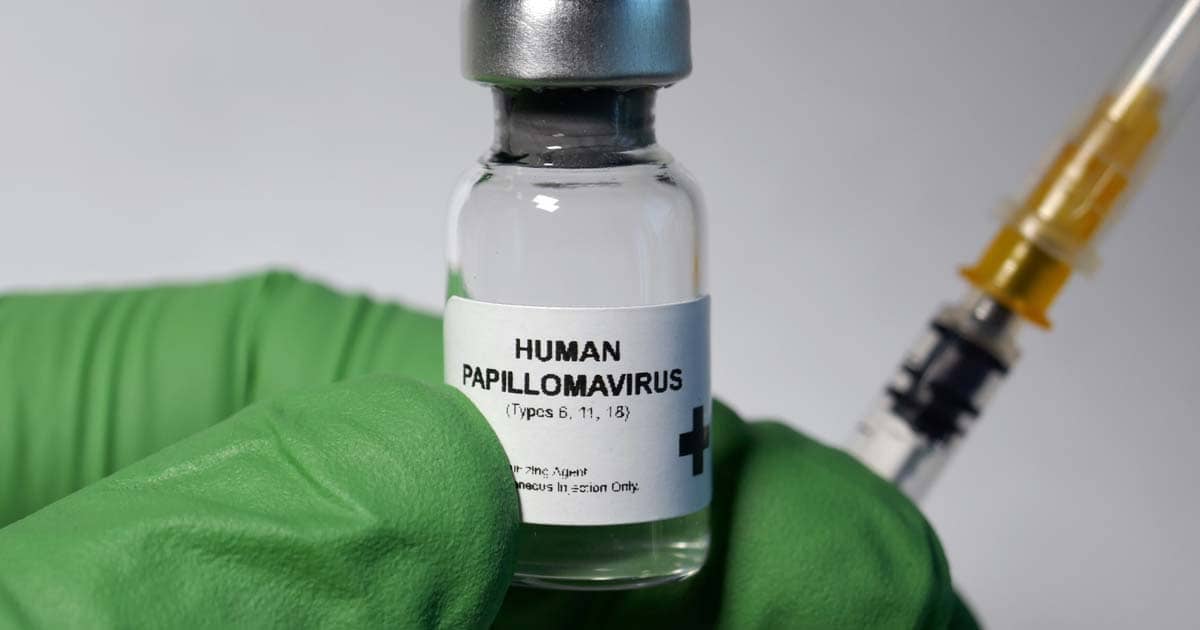When people think of the most common STDs, they will automatically think of chlamydia and gonorrhea. However, human papillomavirus (HPV) turns out to be the most common sexually transmitted infection (STI). According to the Centers for Disease Control and Prevention (CDC), 14 million new cases of HPV are detected each year and approximately 79 million Americans are infected with it at the moment. What is more, 80% of sexually active men and women may be infected with this virus at some point of their life but may not realize this because HPV often shows no symptoms. Despite showing no symptoms, this group of viruses is highly contagious and may be transmitted unknowingly.
The human papillomavirus (HPV) is actually a collection of more than 150 viruses and 40 of which attack the genital area. Some of HPV strains or types infect the skin and throat. Although most HPV cases normally go away on their own (infections in 90% of women with HPV vanish within two years), there are cases where the infection does not clear up and may lead to other health conditions such as genital warts and even worse, cancer. Some HPV strains such as type 16 and type 18 are known to be the culprits that cause 70% of cervical cancers. CDC from the United States also stated that among 45,300 new cancer cases that are discovered in the body parts where HPV is often found, 35,900 of them are caused by HPV. In this article, we will delve deeper into the differences of HPV in men and women.
HPV in Men
It is important that every person, regardless of their gender, can be infected with HPV if they do sexual activities (vaginal, anal and oral sex) with someone who carries the virus. One surprising thing is although the disease is oftentimes associated with women, new research shows that oral HPV is more prevalent in males than females.
HPV Symptoms in Men
As mentioned above, people may have HPV without realizing it. This is especially true for low-risk HPVs in men that tend to disappear on their own after some time. In some men, however, several conspicuous symptoms may appear. An infection that does not go away may manifest in genital warts on the penis, scrotum, anus or groin. Warts may also happen on the back of the throat.
HPV Diagnosis for Men
No blood tests can diagnose HPV, and HPV examinations are more tricky for men because there are no definite tests to detect HPV in them. Diagnosis is often made only by visual examinations to check for visible genital warts. For this reason, most cases of HPV in men often go unnoticed and therefore, are not treated. They may be living with HPV for years without knowing it and spreading it to partners. Men should seek medical help when they notice abnormal skin development and strange occurrences in the penile, anal and scrotal areas.
HPV Risk Factors for Men
Despite the fact that HPV can occur to both men and women, men are not at a high risk for developing health problems resulting from HPV. But do not let out a sigh of relief so quickly, because men who are uncircumcised, have weak immune systems owing to HIV and organ transplant and men who are engaging in sexual activities with other men have a higher chance of developing health problems from HPV. Preventing HPV in men is still important because the virus may cause penile cancer.
Treatment and Prevention for Men
HPV is treatable but currently incurable. Normally, genital warts are treated with topical and oral medications. And as with other sexually transmitted diseases, early diagnosis is key. HPV-related cancers, when detected early, are treatable. Doctors can examine the extent of the cancer and devise a suitable treatment plan based on the conditions. Reducing the risks for HPV is possible if a person gets vaccinated, avoids sexual contact with a partner when genital warts are present and uses condoms.
HPV in women
More effort is allocated to diagnosing HPV cases in women because of the close relations between HPV and cervical cancers. The 16 and 18 HPV strains are behind around 70% cervical cancers as they cause shifts in cervical cells. This condition is referred to as cervical dysplasia. If left untreated, cervical dysplasia may progress to become cervical cancer. However, this does not mean that women with HPV or cervical dysplasia will get cervical cancer.
HPV Symptoms in Women
The symptoms in every woman may differ depending on the type of HPV they have. Low-risk HPVs may end up in warts around the cervix that may cause pain and irritation. In some cases, these warts also cause bleeding. Warts can also be found around the vulva and they take the form of cauliflower-like clusters, dark bumps, and abnormal skin growths (that may be flat, rough or raised). On the other hand, high-risk HPVs usually presents no symptoms but can lead to various cancers (cervical, anal, vaginal, vulvar, and oropharyngeal).
HPV Diagnosis in Women
Unlike HPV in men, scientists have been going above and beyond to create tools to detect HPV in women. Women aged 21 to 65 years are highly encouraged to be regularly screened for HPV. Below are two tests that can detect the disease:
HPV Pap Tests for Women
Cervical cells are examined under the microscope by a health professional to check for cell changes
HPV DNA Tests for Women
This test specifically searches for genetic materials in cell samples and detects the high-risk HPV types associated with cervical cancer
HPV Risk Factors for Women
The risk factors for getting HPV vary depending on age groups, race, ethnicities and sex life. However, young people and adolescents who are between the ages of 15 and 25 are more prone to catching the virus. It is said that more than 75% of new infections happen in this age range. Women at the age of 20-29 years old should be more careful and get tested routinely.
HPV Treatment and prevention for Women
Although the immune system often clears the virus, some cases involving visible warts and changes in cervical cells may need extra treatment and attention. HPV is currently incurable.
- Cryosurgery: warts are frozen by liquid nitrogen
- Loop electrosurgical excision procedure (LEEP): a specific wire loop to remove abnormal cervical cells
- Electrocautery: electrical current will burn off the warts
- Laser therapy: removing warts and abnormal cells
- Special prescription cream: ointment for warts on the genital area
To minimise the chances of getting HPV, the CDC from the United States recommends that everyone get vaccinated and vaccinations are recommended at age 11 or 12. Even though vaccinations are not encouraged for people older than 26 years old, some adults (between 27 and 45 years old) may consider vaccinations after consulting their healthcare provider due to the risks for new HPV infections.
Never put off getting screened for STDs, because sexual health is significant in ensuring your overall well being. Shim Clinic is always at your service. We are a STD clinic specialising in STD testing and STD treatment, as well as HIV prevention methods such as HIV PrEP and HIV PEP.

